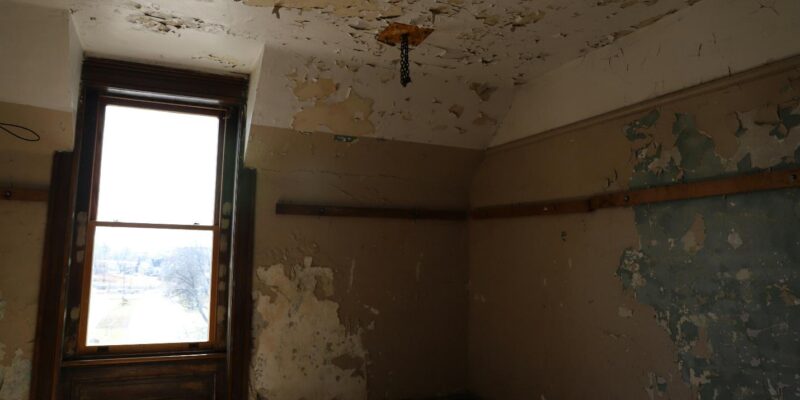Living on the coast is great for the stunning sunrises and ocean breezes, but it also comes with the salt-laden air, storms, and tactile humidity. Under these conditions, water is able to enter the home and cause problems.
Understanding the most common causes of residential water damage can set you one step ahead to help keep your home dry, warm, and structurally sound. You can also visit this website to have a better insight.
What causes burst pipes?
Pipes can crack or burst instantly from temperature changes or spikes in water pressure. The corrosion rates of metal fittings close to the coast are generally higher than for those homes inland. Over time, constant corrosion will thin the pipe walls until failure occurs. Many times, you can’t detect a small drip until it fully bursts and floods your kitchen at 2 a.m., requiring emergency water extraction and plumbing repairs.
- To minimize the potential for pipe failures, insulating exposed pipes, maintaining consistent temperatures inside the house, along with having a licensed plumber to complete an annual pressure test, are a good way to reduce the risk.
- If you hear a whoosh and then hear water running in the walls, that is not a positive sign. Turn off your main valve immediately and have a restoration company out to evaluate the damage before it soaks into your drywall and flooring.
Visit https://simplygreenplumbing.com/9-reasons-why-your-pipes-can-burst/ for more information.
Hidden plumbing leaks
Slow leaks that you can’t see are after water and will saturate any studs and flooring long before you can visibly see a stain.
- With added humidity, finding mold growth in your house will be expedited since a pinhole drips into the stud cavities and carpets can also lead to more serious health conditions.
- If you notice a musty smell from carpets, warped baseboards or extra costs in your water bill, you could have a slow leak within your walls and there may be health risks related to mold growing behind the walls. A moisture meter can be a good tool to help find moisture behind tile or under sinks.
- If you discover a hidden leak, do not just repair the pipe, engage water mitigation contractors to locate the moisture movement behind the walls, and dry out the cavity.
- The sooner the better. The less damage to the structure, and the less expense for extensive repairs.
Roof-leak warning signs
Salt spray and wind continue to destroy your shingles, flashing and vents. Every time we have a storm, walk around your house and look for curled shingles, big losses of granules, and any metal rusting in your valleys. Indoors, look on ceilings for yellow rings or even trickle sounds in an attic.
Miniscule holes, not the size of a pinhole, but the size of a dime, can let gallons of water cascade down your rafters and puddle somewhere behind a wall or mold in your attic. The sooner you recognize these issues; you will only have to organize flood damage restoration in the affected area rather than responding to a ceiling collapse. Make sure your pour water out of your gutters at least six feet away from your foundation, and more importantly, every year think to inspect your roof to investigate the weak areas before the wet season.
Appliances hose failures
Washing machines, refrigerators with ice maker connection, and dishwashers, will all have hoses made out of rubber, or braided, or a combination of both that will oxidize over time.
- The vibration and salt-infused air will crack the outer layer, and a small hole can gush hundreds of gallons overnight.
- Change out rubber hoses, every five years, more if you see bulging, but even consider switching steel braided lines if applicable for your area at the coast and rated for the environment.
- Consider installing automatic shut-off valves on all appliances that are connected to hoses, which will detect leaks, and in this case, hose failure, shut-off the water supply to your appliance. If any of your appliances spill over into your laundry room, structural drying will limit damage to your underlayment, and warping.
- Check regularly behind appliances so you can track any moisture before it gets too serious.
Foundation seepage basics
High tide, and poor grading force groundwater against your foundation, and moisture can seep through holes as small as a pinhole. Surface signs can manifest as efflorescence (white puffy chalky deposits), peeling paint, and a lingering musty smell, especially in a crawl space.
Make sure your downspouts drain at least six feet from the foundation, and that your soil is sloped away from the walls. You can also have French drains in your home or a sump pump, if your property is relatively low to the water table. The sooner you act, the less the chance of rising damp and mold and costly remediation. Doing so will protect the frames of your home longer and air quality inside.
Living near the coast does not mean living with water problems. By being aware of these five warning signs, and acting where you can, you will diminish the small drips before they become tidal waves.
And if the worst happens, never forget that your responsive-water damage clean-up crews are only a phone call away. They are available for 24/7 emergencies, to dry, sanitize and restore your coastal paradise, where you can listen to the ocean surf, not the drip-drip-drop of your future problem.








Comments